Scientific name Galliformes Phylum Chordata | Higher classification Pangalliformes | |
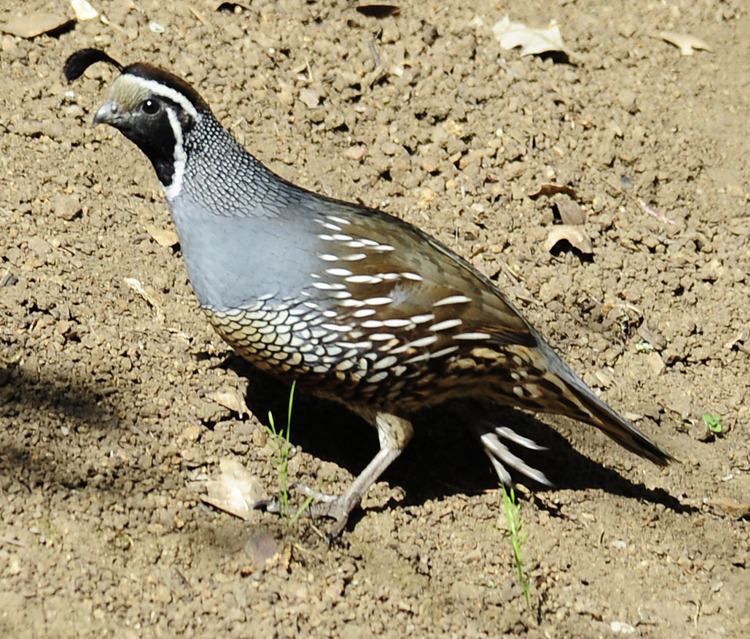 | ||
Order GalliformesTemminck, 1820 Lower classifications Phasianidae, Grouse, Guineafowl, Junglefowl, Pavo | ||
Old game bird of india partridge phasianidae order galliformes or tittar titar by shirishkumar
The Galliformes are an order of heavy-bodied ground-feeding birds that includes turkey, grouse, chicken, New World quail and Old World quail, ptarmigan, partridge, pheasant, junglefowl and the Cracidae. The name derives from "gallus", Latin for "cock" or "rooster". Common names are gamefowl or gamebirds, landfowl, gallinaceous birds, or galliforms. "Wildfowl" or just "fowl" are also often used for the Galliformes, but usually these terms also refer to waterfowl (Anseriformes), and occasionally to other commonly hunted birds. This group has about 290 species, one or more of which are found in essentially every part of the world's continents (except for the innermost deserts and perpetual ice). They are rarer on islands, and in contrast to the closely related waterfowl, are essentially absent from oceanic islands—unless introduced there by humans. Several species have been domesticated during their long and extensive relationships with humans.
Contents
- Old game bird of india partridge phasianidae order galliformes or tittar titar by shirishkumar
- Galliformes birds alipore zoo kolkata india
- Systematics and evolution
- Evolution
- List of major taxa
- Phylogeny
- Description
- Flightlessness
- Behaviour and ecology
- Winter ecology
- Food and feeding
- Reproduction
- Common species
- References
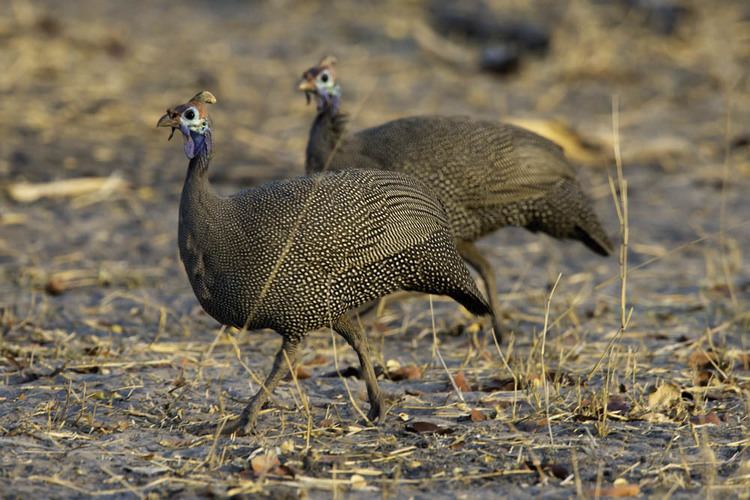
This order contains five families: Phasianidae (including chicken, quail, partridges, pheasants, turkeys, peafowl and grouse), Odontophoridae (New World quails), Numididae (guineafowl), Cracidae (including chachalacas and curassows), and Megapodiidae (incubator birds like mallee fowl and brush-turkeys). They are important as seed dispersers and predators in the ecosystems they inhabit, and are often reared as game birds by humans for their meat and eggs and for recreational hunting. Many gallinaceous species are skilled runners and escape predators by running rather than flying. Males of most species are more colorful than the females. Males often have elaborate courtship behaviors that include strutting, fluffing of tail or head feathers, and vocal sounds. They are mainly nonmigratory.
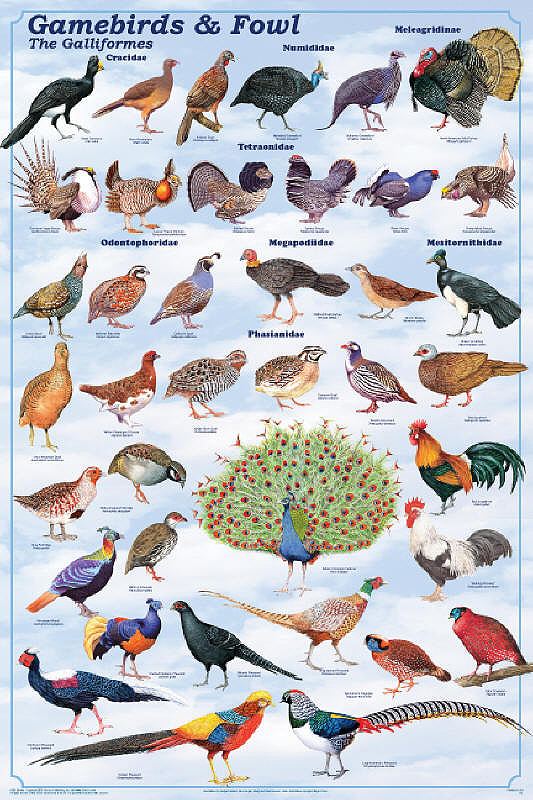
Galliformes birds alipore zoo kolkata india
Systematics and evolution
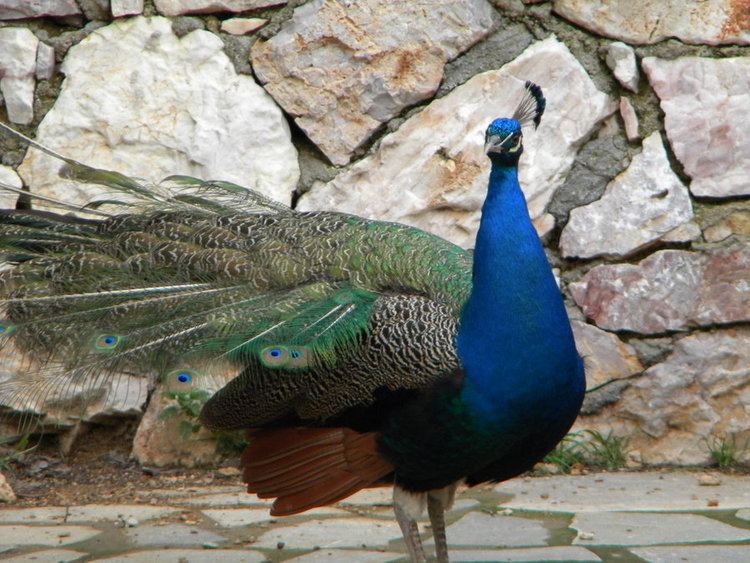
The living Galliformes were once divided into seven or more families. Despite their distinctive appearance, grouse and turkeys probably do not warrant separation as families due to their recent origin from partridge- or pheasant-like birds. The turkeys became larger after their ancestors colonized temperate and subtropical North America, where pheasant-sized competitors were absent. The ancestors of grouse, though, adapted to harsh climates and could thereby colonize subarctic regions. Consequently, the Phasianidae are expanded in current taxonomy to include the former Tetraonidae and Meleagrididae as subfamilies.

The Anseriformes (waterfowl) and the Galliformes together make up the Galloanserae. They are basal among the living neognathous birds, and normally follow the Paleognathae (ratites and tinamous) in modern bird classification systems. This was first proposed in the Sibley-Ahlquist taxonomy and has been the one major change of that proposed scheme that was almost universally adopted. However, the Galliformes as they were traditionally delimited are called Gallomorphae in the Sibley-Ahlquist taxonomy, which splits the Cracidae and Megapodiidae as an order "Craciformes". This is not a natural group, however, but rather an erroneous result of the now-obsolete phenetic methodology employed in the Sibley-Ahlquist taxonomy. Phenetic studies do not distinguish between plesiomorphic and apomorphic characters, which leads to basal lineages appearing as monophyletic groups.
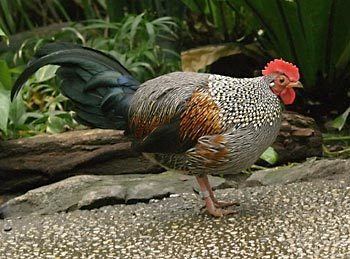
Historically, the buttonquails (Turnicidae), mesites (Mesitornithidae) and the hoatzin (Opisthocomus hoazin) were placed in the Galliformes, too. The former are now known to be shorebirds adapted to an inland lifestyle, whereas the mesites are probably closely related to pigeons and doves. The relationships of the hoatzin are entirely obscure, and it is usually treated as a monotypic order Opisthocomiformes to signify this.
Evolution
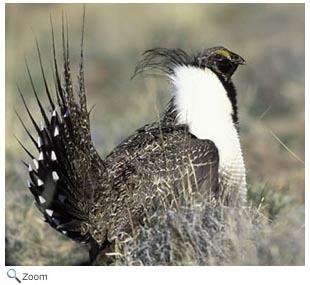
The earliest galliform-like fossils hail from the Late Cretaceous, most notably those of Austinornis lentus. Its partial left tarsometatarsus was found in the Austin Chalk near Fort McKinney, Texas, dating to about 85 million years ago (Mya). This bird was quite certainly closely related to Galliformes, but whether it was a part of these or belongs elsewhere in the little-known galliform branch of Galloanserae is not clear. However, in 2004, Clarke classified it as a member of the larger group Pangalliformes, more closely related to chickens than to ducks, but not a member of the crown group that includes all modern galliformes. Another specimen, PVPH 237, from the Late Cretaceous Portezuelo Formation (Turonian-Coniacian, about 90 Mya) in the Sierra de Portezuelo (Argentina) has also been suggested to be an early galliform relative. This is a partial coracoid of a neornithine bird, which in its general shape and particularly the wide and deep attachment for the muscle joining the coracoid and the humerus bone resembles the more basal lineages of galliforms.
Additional galliform-like pangalliformes are represented by extinct families from the Paleogene, namely the Gallinuloididae, Paraortygidae and Quercymegapodiidae. In the early Cenozoic, some additional birds may or may not be early Galliformes, though even if they are, they are unlikely to belong to extant families:
From the mid-Eocene onwards – about 45 Mya or so, true galliforms are known, and these completely replace their older relatives in the early Neogene. Since the earliest representatives of living galliform families apparently belong to the Phasianidae – the youngest family of galliforms, the other families of Galliformes must be at least of Early Eocene origin but might even be as old as the Late Cretaceous. The ichnotaxon Tristraguloolithus cracioides is based on fossil eggshell fragments from the Late Cretaceous Oldman Formation of southern Alberta, Canada, which are similar to chachalaca eggs, but in the absence of bone material, their relationships cannot be determined except they are apparently not from a nonavian dinosaur.
Modern genera of phasianids start appearing around the Oligo-/Miocene boundary, roughly 25–20 Mya. It is not well known whether the living genera of the other, older, galliform families originated around the same time or earlier, though at least in the New World quails, pre-Neogene forms seem to belong to genera that became entirely extinct later on.
A number of Paleogene to mid-Neogene fossils are quite certainly Galliformes, but their exact relationships in the order cannot be determined:
List of major taxa
For a long time, the pheasants, partridges, and relatives were indiscriminately lumped in the Phasianidae, variously including or excluding turkeys, grouse, New World quails, and guineafowl, and divided into two subfamilies – the Phasianinae (pheasant-like forms) and the Perdicinae (partridge-like forms). This crude arrangement was long considered to be in serious need of revision, but even with modern DNA sequence analyses and cladistic methods, the phylogeny of the Phasianidae has resisted complete resolution.
A tentative list of the higher-level galliform taxa, listed in evolutionary sequence, is:
The relationships of many pheasants and partridges are still very badly resolved and much confounded by adaptive radiation (in the former) and convergent evolution (in the latter). Thus, the bulk of the Phasianidae can alternatively be treated as a single subfamily Phasianinae. The grouse, turkeys, true pheasants, etc., would then become tribes of this subfamily, similar to how the Coturnicinae are commonly split into a quail and a spurfowl tribe.
The taxon Perdicinae is tentatively limited to the genus Perdix and perhaps one or two others. That "the" partridge of Europe is not closely related to other partridge-like Galliformes is already indicated by its sexually dimorphic coloration and more than 14 rectrices, traits it shares with the other advanced phasianids. However, among these its relationships are obscure; it is entirely unclear whether it is closer to the turkeys or to certain short-tailed pheasants like Ithaginis, Lophophorus, Pucrasia, and Tragopan.
Phylogeny
Living Galliformes based on the work by John Boyd.
Description
They are chicken-like in appearance, with rounded bodies and blunt wings, and range in size from small at 15 cm (6 inches) to large at 120 cm (4 feet). They are mainly terrestrial birds and their wings are short and rounded for short-distance flight. Galiforms are anisodactyly like passerines, but some of the adult males grow spurs that points backward.
Gallinaceous birds are arboreal or terrestrial animals; many prefer not to fly, but instead walk and run for locomotion. They live 5–8 years in the wild and up to 30 years in captivity. They can be found worldwide and in a variety of habitats, including forests, deserts, and grasslands. They use visual displays and vocalizations for communication, courtship, fighting, territoriality, and brooding.
They have diverse mating strategies: some are monogamous, while others are polygamous or polygynandrous. Male courtship behavior includes elaborate visual displays of plumage. They breed seasonally in accordance with the climate and lay three to 16 eggs per year in nests built on the ground or in trees.
Gallinaceous birds feed on a variety of plant and animal material, which may include fruits, seeds, leaves, shoots, flowers, tubers, roots, insects, snails, worms, lizards, snakes, small rodents, and eggs.
These birds vary in size from the diminutive king quail (Coturnix chinensis) (5 in) long and weighing 28–40 g (1–1.4 oz) to the largest extant galliform species, the North American wild turkey (Meleagris gallopavo), which may weigh as much as 14 kg (30.5 lb) and may exceed 120 cm (47 in).
The galliform bird species with the largest wingspan and largest overall length (including a train of over 6 feet) is most likely the green peafowl (Pavo muticus). Most galliform genera are plump-bodied with thick necks and moderately long legs, with rounded and rather short wings. Grouse, pheasants, francolins, and partridges are typical in their outwardly corpulent silhouettes.
Adult males of many galliform birds have one to several sharp horny spurs on the back of each leg, which they use for fighting. In several lineages, pronounced sexual dimorphism occurs, and among each galliform clade, the more apomorphic ("advanced") lineages tend to be more sexually dimorphic.
Flightlessness
While most galliformes are rather reluctant flyers, flightless forms are utterly unknown among the living members of the order. Though they are often mischaracterised as weak-flying, Galliformes are actually highly specialised for their particular flight style, bearing extremely powerful flight muscles, and some species are even migratory.
Nonetheless, a few birds outside the Galliforme crown-group did produce flightlessness.
The genus Sylviornis, a huge prehistorically extinct species of New Caledonia, was flightless, but as opposed to most other flightless birds like ratites or island rails which become flightless due to arrested development of their flight apparatus and subsequently evolve to larger size, Sylviornis seems to have become flightless simply due to its bulk, with the wing reduction following a consequence, not the reason for its flightlessness.
The gigantic australian mihirungs, which may be closer to Galliformes than to Anseriformes as traditionally expected, achieved flightlessness more traditionally, strongly reducing their wings and keel. They were massive herbivorous birds, among the largest avian dinosaurs of all time.
Behaviour and ecology
Most of the galliform birds are more or less resident, but some of the smaller temperate species (such as quail) do migrate over considerable distances. Altitudinal migration is evidently quite common amongst montane species, and a few species of subtropical and subarctic regions must reach their watering and/or foraging areas through sustained flight. Species known to make extensive flights include the ptarmigans, sage-grouse (Centrocercus), crested partridge, green peafowl, crested argus, mountain peacock-pheasant (Polyplectron inopinatum), koklass pheasant (Pucrasia macrolopha), Reeves's pheasant and (Syrmaticus reevesii). Other species—most of the New World quails (also known as the toothed quails), the enigmatic stone partridge (Ptilopachus petrosus) of Africa, guineafowl, and eared pheasants (Crossoptilon)—are all notable for their daily excursions on foot which may take them many miles in a given day.
Some Galliformes are adapted to grassland habitat, and these genera are remarkable for their long, thin necks, long legs, and large, wide wings. Fairly unrelated species like the crested fireback (Lophura ignita), vulturine guineafowl (Acryllium vulturinum), and malleefowl (Leipoa ocellata) are outwardly similar in their body types (see also convergent evolution).
Most species that show only limited sexual dimorphism are notable for the great amount of locomotion required to find food throughout the majority of the year. Those species that are highly sedentary but with marked ecological transformations over seasons exhibit marked distinct differences between the sexes in size and/or appearance. Eared-pheasants, guineafowls, toothed quails, and the snow partridge (Lerwa lerwa) are examples of limited sexual differences and requirements for traveling over wide terrain to forage.
The bronze-tailed peacock-pheasant (Polyplectron chalcurum), snow partridge, painted spurfowl (Galloperdix lunulata), and crimson-headed partridge (Haematortyx sanguiniceps) are notable in their habit of moving around as pairs not only on foot, but also in the air.
Winter ecology
Gallinaceous birds are well adapted to regions with cold winters. Their larger size, increased plumage, and lower activity levels help them to withstand the cold and conserve energy. Under such conditions, they are able to change their feeding strategy to that of a ruminant. This allows them to feed on and extract energy and nutrients from coarse, fibrous plant material, such as buds, twigs, and conifer needles. This provides a virtually unlimited source of accessible food and requires little energy to harvest.
Food and feeding
Herbivorous to slightly omnivorous galliforms, comprising the majority of the group, are typically stoutly built and have short, thick bills primarily adapted for foraging on the ground for rootlets or the consumption of other plant material such as heather shoots. The young birds will also take insects.
Peafowl, junglefowl and most of the subtropical pheasant genera have very different nutritional requirements from typical Palearctic genera. The Himalayan monal (Lophophorus impejanus) has been observed digging in the rotting wood of deadfall in a similar manner to woodpeckers to extract invertebrates, even bracing itself with aid of its squared tail. The cheer pheasant (Catreus wallichi), crested argus (Rheinardia ocellata), the crested partridge (Rollulus roulroul) and the crested guineafowl (Guttera pucherani) are similar ecologically to the Himalayan monal in that they too forage in rotting wood for termites, ant and beetle larvae, molluscs, crustaceans and young rodents.
Typical peafowl (Pavo), most of the peacock-pheasants (Polyplectron), the Bulwer's pheasant (Lophura bulweri), the ruffed pheasants (Chrysolophus) and the hill partridges (Arborophila) have narrow, relatively delicate bills, poorly suited for digging. These galliform genera prefer instead to capture live invertebrates in leaf litter, in sand, or shallow pools or along stream banks. These genera are also outwardly similar in that they each have exceptionally long, delicate legs and toes and the tendency to frequent seasonally wet habitats to forage, especially during chick-rearing. The blue peafowl (Pavo cristatus) is famed in its native India for its appetite for snakes – even poisonous cobras – which it dispatches with its strong feet and sharp bill. The Lady Amherst's pheasant (Chrysolophus amherstiae), green peafowl (Pavo muticus), Bulwer's pheasant and the crestless fireback (Lophura erythrophthalma) are notable for their aptitude to forage for crustaceans such as crayfish and other aquatic small animals in shallow streams and amongst rushes in much the same manner as some members of the rail family (Rallidae). Similarly, although wild turkeys (Meleagris gallopavo) have a diet primarily of vegetation, they will eat insects, mice, lizards, and amphibians, wading in water to hunt for the latter. Domestic hens (Gallus domesticus) share this opportunistic behaviour and will eat insects, mice, worms, and amphibians.
The tragopans (Tragopan), mikado pheasant (Syrmaticus mikado), and several species of grouse and ptarmigan are exceptional in their largely vegetarian and arboreal foraging habitats; grouse are especially notable for being able to feed on plants rich in terpenes and quinones – such as sagebrush or conifers –, which are often avoided by other herbivores. Many species of moderate altitudes—for example the long-tailed pheasants of the genus Syrmaticus—also find a great deal of their daily nutritional requirements in the tree canopies, especially during the snowy and rainy periods when foraging on the ground is dangerous and less than fruitful for a variety of reasons. Although members of the genus Syrmaticus are capable of subsisting almost entirely on vegetarian materials for months at a time, this is not true for many of the subtropical genera. For example, the great argus (Argusianus argus) and crested argus may do most of their foraging during rainy months in the canopy of the jungle, as well. There they are known to forage on slugs, snails, ants, and amphibians to the exclusion of plant material. How they forage in the forest canopy during the rainy months is unknown.
Reproduction
Most galliforms are very prolific, with clutches regularly exceeding 10 eggs in many species. In contrast to most birds which are – at least for a particular breeding season – monogamous, galliforms are often polygynous or polygamous. Such species can be recognized by their pronounced sexual dimorphism.
Galliform young are very precocious and roam with their mothers – or both parents in monogamous species – mere hours after hatching. The most extreme case are the Megapodiidae, where the adults do not brood, but leave incubation to mounds of rotting vegetation, volcanic ash, or hot sand. The young must dig out of the nest mounds after hatching, but they emerge from the eggs fully feathered, and upon leaving the mound, they are able to fly considerable distances.
Common species
Grouse and ptarmigans Family Tetraonidae
Grouse, ptarmigans, and prairie chickens are all chicken-like birds with short, curved, strong bills, part of the family Tetraonidae. This group includes 25 species residing mostly in North America. They are mainly ground-dwellers and have short, rounded wings for brief flights. They are well adapted to winter by growing feather “snowshoes” on their feet and roosting beneath the snow. They range in size from the 13-inch white-tailed ptarmigan to the 28-inch sage grouse. Their plumage is dense and soft and is most commonly found in shades of red, brown, and gray to camouflage to the ground. They are polygamous and male courtship behavior includes strutting and dancing and aggressive fighting for possession of females. The typical clutch size is between seven and 12 eggs.
Turkeys Family Meleagrididae
Turkeys are large, long-legged birds that can grow up to four feet in height and weigh up to 30 lbs in the wild. They have a long, broad, rounded tail with 14-19 blunt feathers. They have a naked, wrinkled head and feathered body. The North American wild turkey – Meleagris gallopavo – has five distinct subspecies (Eastern, Rio Grande, Florida [Osceola], Merriam's, and Gould's). Hybrids also exist where the ranges of these subspecies overlap. All are native only to North America, though transplanted populations exist elsewhere. Their plumage differs slightly by subspecies, but is generally dark to black for males, with buff to cream highlights, and generally drab brown for females. The feathers are quite iridescent and can take on distinct reddish/copper hues in sunlight. Their feathers are well defined with broad, square ends, giving the bird the appearance of being covered in scales. Males have a “beard” of coarse black bristles hanging from the center of their upper breasts and tend to have more vibrantly colored plumage than do females. They breed in the spring and their typical clutch size is between 10 and 12 eggs. The ocellated turkey (Meleagris ocellata), a different species of turkey, currently exists only in a portion of the Yucatán peninsula. After the 19th and early 20th centuries, wild turkey populations dropped significantly because of hunting and habitat loss. However, populations now flourish again due to hunting management and transplanting. The ocellated turkey, not commonly hunted, is currently threatened due to ongoing habitat loss in the Yucutan.
Pheasants, quail, and partridges Family Phasianidae
The family is divided into four groups: 30 species of new world quail, residing between Paraguay and Canada, 11 species of Old World quails in Africa, Australia, and Asia, 94 species of partridges, and 48 species of pheasants. This family includes a wide range of bird sizes from a 5 ½-inch quail to pheasants up to almost 30 inches. Pheasants and quails have heavy, round bodies and rounded wings. Though they have short legs, they are very fast runners when escaping predators.
Chachalacas Family Cracidae
Chachalacas are found in the chaparral ecosystems from southern Texas through Mexico and Costa Rica. They are mainly arboreal and make their nests in trees five to 15 feet above the ground. They are large, long-legged birds that can grow up to 26 in long. They have long tails and are chicken-like in appearance. Their frail-looking yet sturdy nests are made of sticks and leaves. Their clutch size is three or four eggs. The males make a unique, loud, mating call that give them their name. Chachalacas feed mainly on berries, but also eat insects. They are a popular game bird, as their flesh is good to eat. They are also commonly domesticated as pets.
